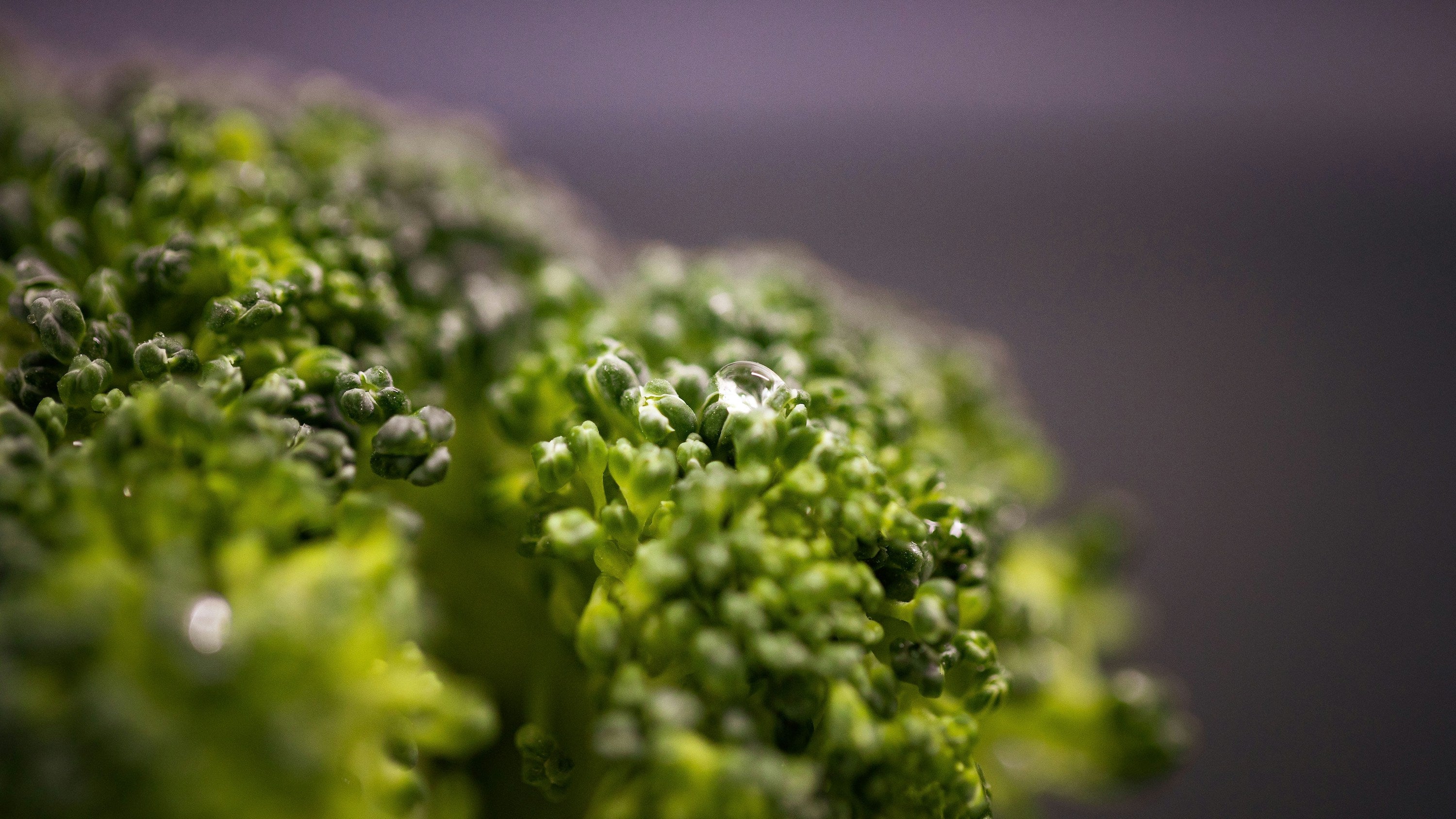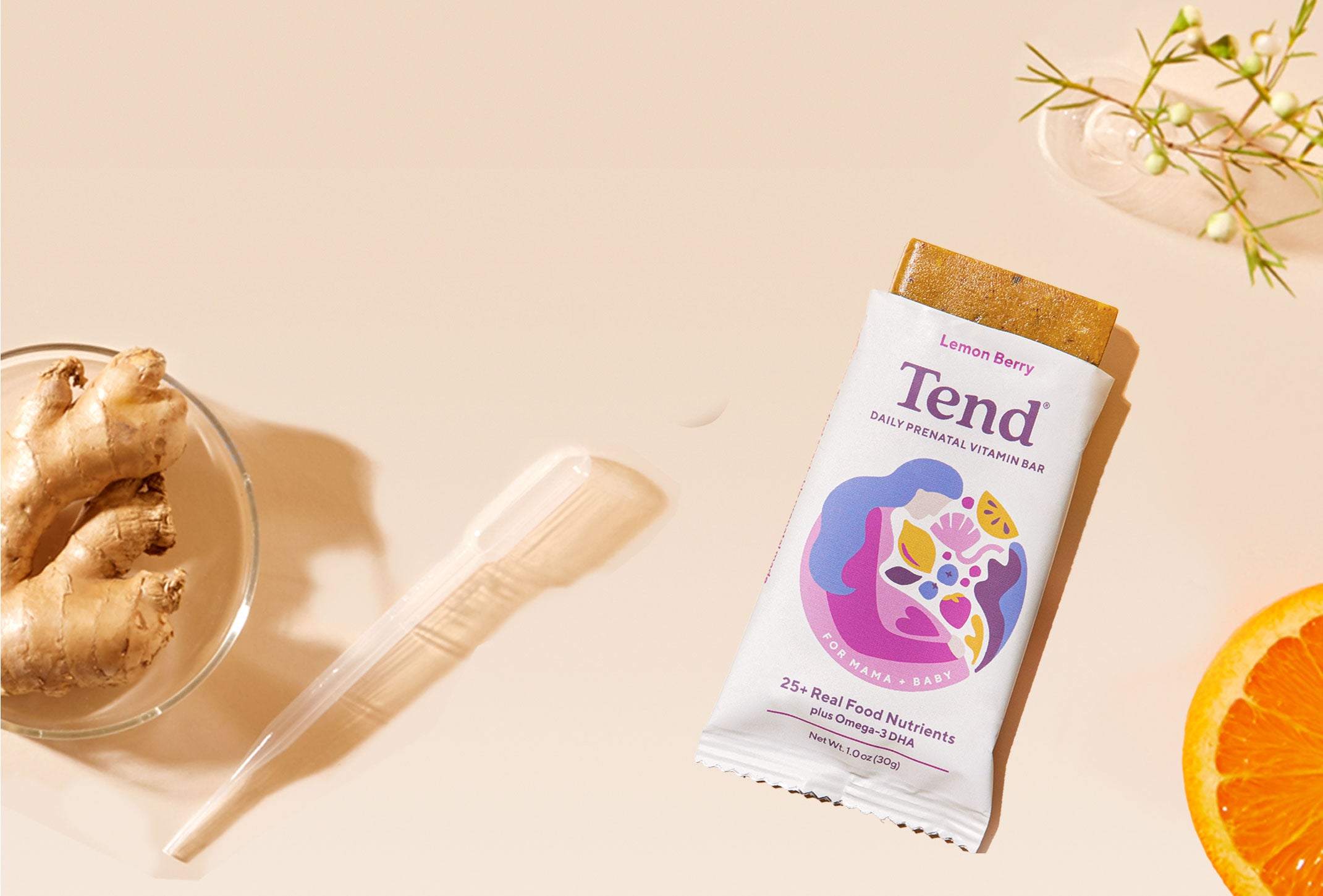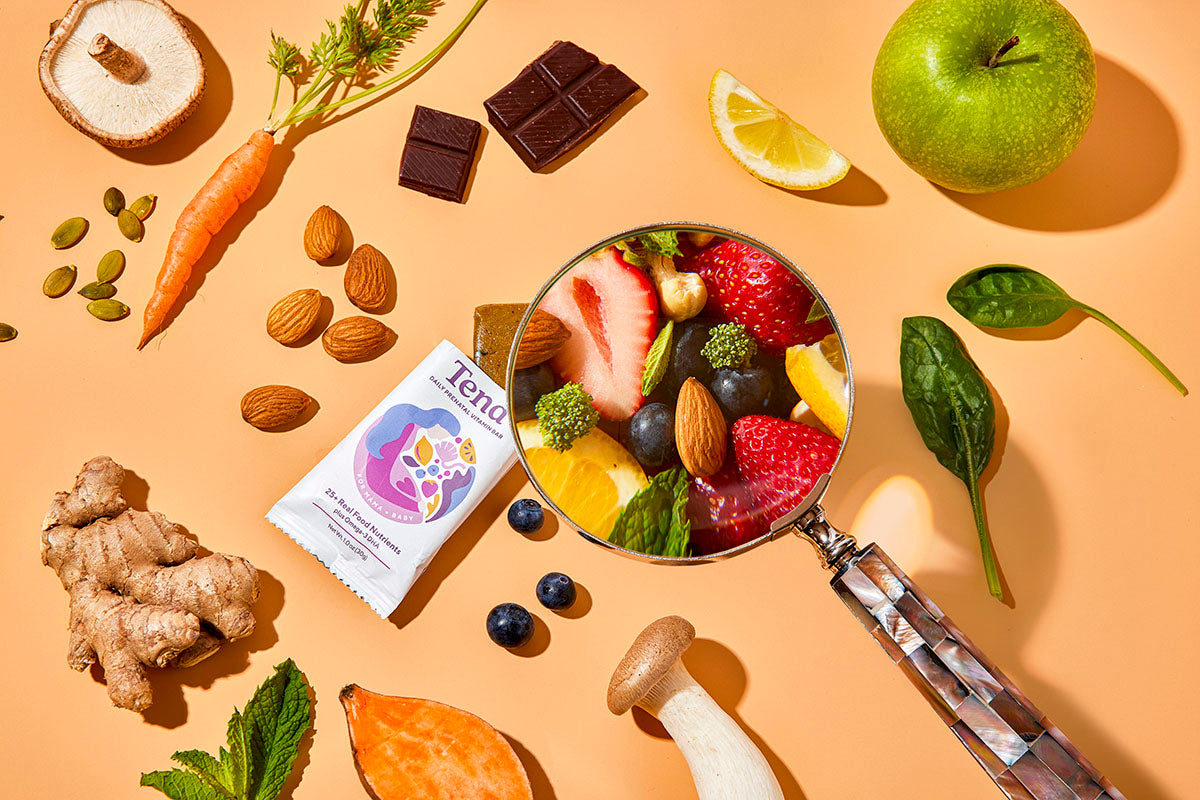Broccoli reduces cancer risk, prevents diabetes and even detoxes your body from harmful pollutants, thanks to a unique compound called sulforaphane. Known for myriad health benefits, sulforaphane is particularly beneficial for pregnant women. (Broccoli is a very pregnancy-safe food, and one of the components in our Tend nutrient blend).
But when you cook broccoli (and other cruciferous veggies), you lose an enzyme called myrosinase, which is required to activate sulforaphane.
Keep reading to learn how to re-activate and quadruple broccoli’s sulforaphane levels!
How Mustard Seed Powder Enhances Sulforaphane Absorption
Broccoli is renowned for its high content of glucoraphanin, a precursor to sulforaphane. However, the conversion of glucoraphanin to sulforaphane requires the enzyme myrosinase, which can be destroyed via heat during cooking.
This is where mustard seed powder comes in. Mustard seeds are rich in myrosinase, and adding mustard seed powder to cooked broccoli can significantly boost the formation of sulforaphane.
A study published in the Journal of Agricultural and Food Chemistry demonstrated that adding powdered mustard seeds to heat-processed broccoli significantly increased sulforaphane formation. The myrosinase in mustard seeds catalyzes the conversion of glucoraphanin to sulforaphane even after broccoli has been cooked, thus boosting the absorption of this incredible compound, sulforaphane.1
Benefits of Sulforaphane
Sulforaphane is a potent antioxidant and anti-inflammatory compound that has been extensively studied for its health benefits. These benefits are particularly valuable during pregnancy, when both the mother's and the baby's health are paramount.
General Health Benefits
-
Cancer Prevention: Sulforaphane has been shown to have anti-cancer properties. It works by activating enzymes that detoxify carcinogens and by inhibiting the proliferation of cancer cells. A study published in Cancer Prevention Research found that sulforaphane can help reduce the risk of breast, prostate, and colon cancers.2
-
Detoxification: Sulforaphane enhances the body's detoxification processes by increasing the production of enzymes essential to the excretion of carcinogens/irritants such as benzene and acrolein.3 Sulforaphane helps the body eliminate harmful toxins more efficiently3.
- Anti-Inflammatory Properties: Chronic inflammation is linked to various health conditions, including heart disease and arthritis. Sulforaphane helps reduce inflammation by inhibiting the activation of NF-κB, a key protein complex involved in the inflammatory response.
Prenatal Health Benefits
At Tend our mission is to nourish from the earth, with the best natural nutrients – which often mean eating a nutrient-dense diet of fruits and vegetables. Broccoli is one of the healthiest vegetables due to sulforaphane, and here are the prenatal-specific benefits from consuming it on the regular:
-
Neuroprotective Effects: Sulforaphane has neuroprotective properties that are beneficial for both the mother and the developing fetus. A study published in Frontiers in Neuroscience highlighted that sulforaphane can protect against oxidative stress and inflammation in the brain, which is crucial during fetal brain development.
-
Gestational Diabetes Management: A study in the Journal of Clinical Endocrinology & Metabolism found that sulforaphane significantly improved glucose control in individuals with diabetes. Sulforaphane has been shown to insulin sensitivity and reduce blood glucose levels, which can help manage gestational diabetes. A study in the Journal of Clinical Endocrinology & Metabolism found that sulforaphane supplementation significantly improved glucose control in individuals with diabetes.
- Supports Immune Function: During pregnancy, the immune system undergoes changes to support the growing fetus. Sulforaphane boosts the immune system by increasing the production of antioxidant enzymes, enhancing the body's ability to fight off infections.
A Simple Hack to Try
Sprinkle mustard seed powder on your cooked broccoli to re-activate and quadruple broccoli’s sulforaphane levels! You can also try combining raw broccoli or broccoli sprouts, which are also particular high in glucoraphanin. Or, add mustard seed powder to your green smoothies or soup – enhancing not just the flavor but also the nutritional profile.
Click here to see the video version.
And, if you're interested in getting the nutritional equivalent of 8+ servings of fruits and veggies in one convenient snack for preconception, pregnancy, and postpartum look no further and try Tend.
Note: Raw broccoli also contains high amounts of bioavailable sulforaphane! Some studies show up to 10x the amount in cooked. But the enzyme myrosinase is only released when the plant is cut or masticated. So, if you opt to eat raw broccoli, make sure to thoroughly chew!
References:
1. Angelino, D., Jeffery, E. H., & Gliszczynska-Swiglo, A. (2014). Interactions between glucosinolates and phenolic compounds with myrosinase in plant extracts and their impact on the formation of sulforaphane. Journal of Agricultural and Food Chemistry, 62(46), 10965-10970.
2. Clarke, J. D., Dashwood, R. H., & Ho, E. (2008). Multi-targeted prevention of cancer by sulforaphane. Cancer Prevention Research, 1(7), 562-570. doi:10.1158/1940-6207.CAPR-08-0124.
3. P. A. Egner, J. G. Chen, A. T. Zarth, D. Ng, J. Wang, K. H. Kensler, L. P. Jacobson, A. Munoz, J. L. Johnson, J. D. Groopman, J. W. Fahey, P. Talalay, J. Zhu, T.-Y. Chen, G.-S. Qian, S. G. Carmella, S. S. Hecht, T. W. Kensler. Rapid and Sustainable Detoxication of Airborne Pollutants by Broccoli Sprout Beverage: Results of a Randomized Clinical Trial in China, Cancer Prevention Research, 2014; DOI:10.1158/1940-6207.CAPR-14-0103
4. Zhang, Y., Talalay, P., Cho, C. G., & Posner, G. H. (1992). A major inducer of anticarcinogenic protective enzymes from broccoli: isolation and elucidation of structure. Proceedings of the National Academy of Sciences, 89(6), 2399-2403. doi:10.1073/pnas.89.6.2399
5. Heiss, E., Herhaus, C., Klimo, K., Bartsch, H., & Gerhäuser, C. (2001). Nuclear factor κB is a molecular target for sulforaphane-mediated anti-inflammatory mechanisms. Journal of Biological Chemistry, 276(34), 32008-32015. doi:10.1074/jbc.M104794200.
6. Tarozzi, A., Morroni, F., Merlicco, A., Bolondi, C., Teti, G., Falconi, M., ... & Hrelia, P. (2013). Sulforaphane as a potential protective phytochemical against neurodegenerative diseases. Frontiers in Neuroscience, 7, 288. doi:10.3389/fnins.2013.00288.
7. Axelsson, A. S., Tubbs, E., Mecham, B., Chacko, S., Nenonen, H. A., Tang, Y., ... & Wierup, N. (2017). Sulforaphane reduces hepatic glucose production and improves glucose control in patients with type 2 diabetes. Journal of Clinical Endocrinology & Metabolism, 102(7), 2609-2619. doi:10.1210/jc.2016-3254.
8. Riedl, M. A., Saxon, A., & Diaz-Sanchez, D. (2009). Oral sulforaphane increases Phase II antioxidant enzymes in the human upper airway. Clinical Immunology, 130(3), 244-251. doi:10.1016/j.clim.2008.10.007.
Photo by Thomas Griggs on Unsplash




